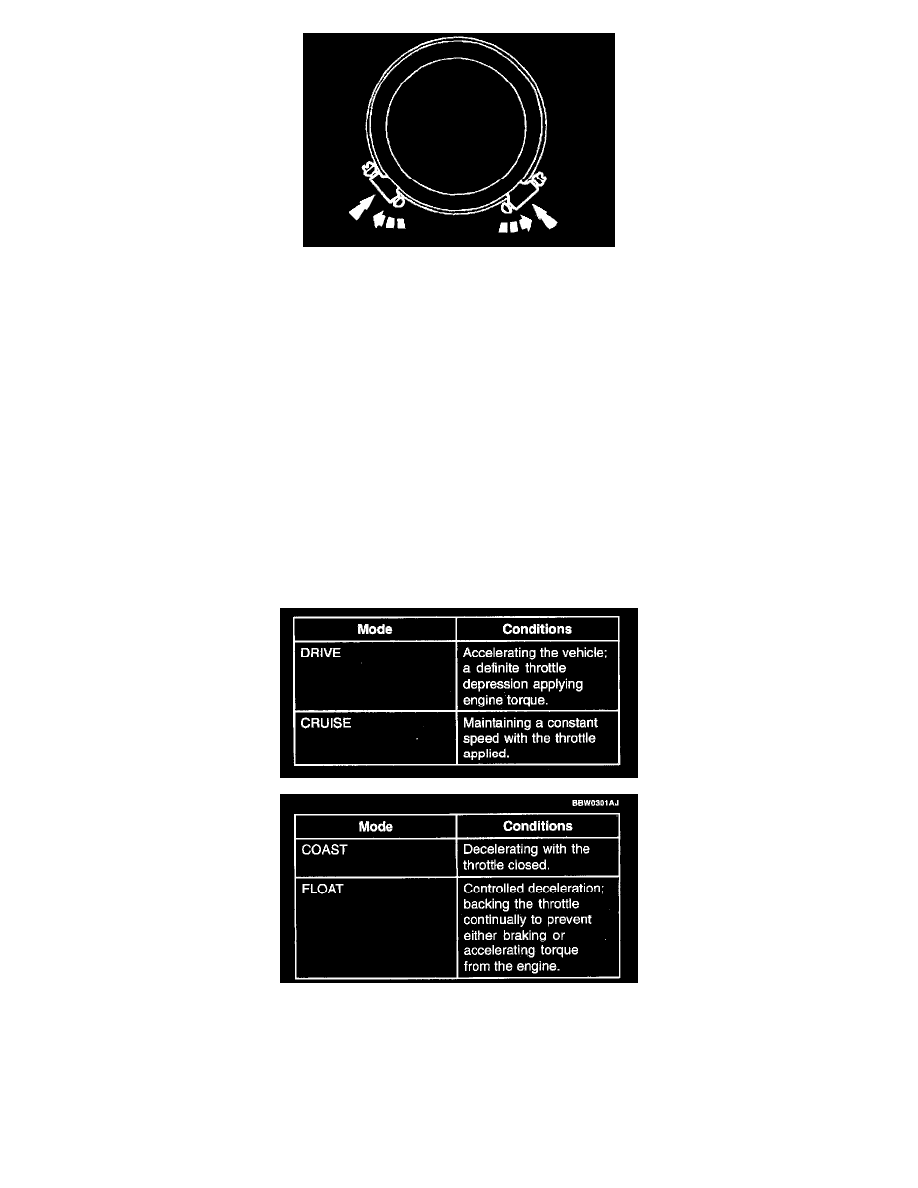B4000 V6-4.0L SOHC (2005)

If no improvement is noted, rotate the clamps in opposite directions, equal distances from the best position determined in Step 8. Separate the
clamp heads about 13 mm (1/2 inch) and recheck for vibration at the road speed.
Repeat the process with increasing separation until the best combination is found or the vibration is reduced to an acceptable level.
10. Install the wheels and road test (vibration noticeable on the hoist may not be evident during the road test). If the vibration is still not acceptable,
replace the axle drive line vibration damper first, if so equipped.
Symptom Trouble Shooting - Driveline/Axle
SYMPTOM TROUBLESHOOTING CHART - DRIVELINE / AXLE
Preliminary Diagnosis
^
Question the Customer
The preliminary diagnosis starts with the customer interview. The history of the concern must be investigated: When was it first noticed? Did it appear
suddenly or gradually? Did any abnormal occurrence coincide with or precede its appearance (such as pothole or curb impacts, minor collisions, etc.)?
Were any repair procedures performed or parts replaced? It is also necessary to know any special conditions affecting the appearance and degree of
the concern, such as road speed, type of road, drive mode, engine temperature, ambient temperature, etc.
A gradual appearance of the concern indicates a deterioration of a component, such as tires, halfshafts or front wheel bearings.
A sudden appearance of the concern could indicate a lost wheel balance weight or frozen constant velocity (CV) joint.
ROAD TEST - DRIVELINE / AXLE
A road test is mandatory for any customer concern of noise/vibration that is not verified by the on-hoist check of chassis components.
Operate the vehicle in all four modes and record those in which the noise occurs. Write down the kilometers-per-hour (miles-per-hour) range at which
both noise and vibration occur. Evaluate rear axle noise with the transmission in DIRECT DRIVE and not in OVERDRIVE. Transmission noise can
be mistaken for rear axle noise when in OVERDRIVE.
AXLE NOISE ACCEPTABILITY
Note:
